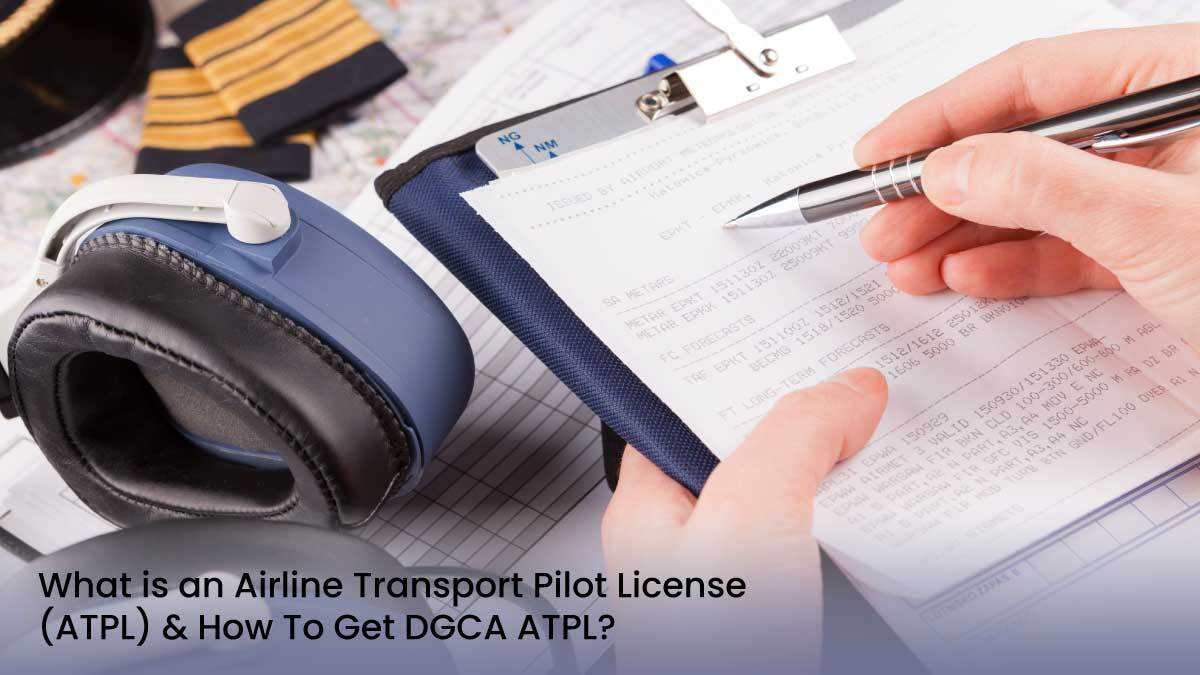
Dreaming of commanding the skies and steering a commercial airliner to new heights? Your journey towards that goal begins with obtaining a Directorate General of Civil Aviation (DGCA) ATPL, the coveted Airline Transport Pilot License. While Insight Aviation doesn’t currently offer a direct ATPL program, we can still be your trusted partner on your path to becoming a successful airline captain. Our comprehensive Commercial Pilot License (CPL) program, a key step in meeting the DGCA ATPL requirements, provides a solid foundation for your aviation career and serves as a crucial stepping stone towards obtaining your ATPL in the future.
Understanding the ATPL
The Airline Transport Pilot License (ATPL) stands as the highest level of certification for aircraft pilots, granting them the authority to serve as Pilot in Command (PIC) of commercial aircraft. This credential, often referred to as an Airline Transport Pilot (ATP) certificate, is indispensable for those aspiring to lead as Captains in the airline industry.
Requirements for the DGCA ATPL License
DGCA exam eligibility for the ATPL license, as per the DGCA, candidates must fulfil the following ATPL requirements:
- Age: Be at least 21 years old on the date of application.
- Educational Qualification: Have passed 10+2 with Physics and Mathematics or an equivalent examination from a recognised Board/University.
- Medical Fitness: Produce a certificate of physical fitness from an approved Medical Board.
- Knowledge: Pass a written and oral examination in the subjects prescribed by the Director-General, including Air Regulations, Air Navigation, Avionics (Radio Aids and Instruments), Aviation Meteorology, Aircraft and Engines, and a Signals (Practical) examination.
Qualification for ATPL
To obtain an ATPL license, candidates must hold an Indian Commercial Pilot License (CPL) or, in the case of Defence Personnel in lieu of CPL, evidence of having completed 500 hours of flying experience, of which 200 Hours should be as Pilot-in-Command.
Other Requirements:
- Hold a current Commercial or Senior Commercial Pilot’s License (not applicable for pilots from the Armed Forces who meet the other requirements).
- Possess a current Instrument Rating on multi-engine aircraft.
- Have a valid Flight Radio Telephone Operator’s License.
- Skill: Demonstrate competency in the prescribed procedures and manoeuvres on a multi-engine aeroplane within the six months preceding the application.
Path to Obtaining the ATPL License
Obtaining the required 1500 hours of flight experience typically involves one of two paths:
- Becoming a Flight Instructor: After obtaining a CPL, aspiring pilots can gain further experience and build their flight hours by working as flight instructors. This allows them to earn while they learn and progress towards their ATPL.
- Working as an Airline Pilot: Pilots with a CPL can join airlines and gradually accumulate flight hours through their work experience. This path offers a direct entry into the airline industry, allowing pilots to gain valuable experience while working towards their ATPL.
Career & Job Prospects
With an ATPL, pilots can explore diverse career opportunities in commercial airlines, cargo planes, charter services, and private aviation sectors. Employment prospects extend beyond India, with global demand for skilled commercial pilots on the rise.
Conclusion
Start your journey to the skies and pursue your ATPL. At Insight Aviation, we understand that obtaining an ATPL is the culmination of a pilot’s aspirations, and we’re here to support you every step of the way. Our CPL training program serves as a solid foundation, equipping cadets with the skills and knowledge needed to excel in their aviation careers. With a focus on safety, proficiency, and professionalism, we prepare you to navigate the complexities of modern aviation and achieve your dreams of commanding commercial aircraft. Explore the possibilities with Insight Aviation, where your ambitions take flight.
Q. What is the difference between a Commercial Pilot License (CPL) and an Airline Transport Pilot License (ATPL)?
A. A Commercial Pilot License (CPL) allows you to fly aircraft for commercial purposes, such as in charter operations or as a flight instructor. However, to be the Pilot in Command (Captain) of a large commercial airliner, you need an Airline Transport Pilot License (ATPL). The ATPL is the highest level of pilot certification and requires more experience and additional exams compared to a CPL.
Q. How long does it typically take to obtain an ATPL after getting a CPL?
A. There’s no fixed timeline, as it depends on how quickly you can accumulate the required 1500 hours of flight experience. It generally takes about 3-4 years for an airline pilot to accumulate 1500 hours, but depending on an individual this can take anywhere from a few years to a decade, depending on the chosen career path (flight instructor or airline pilot) and other factors.
Q. Can I obtain an ATPL without a college degree?
A. Yes, while a college degree is not mandatory for an ATPL, you do need to fulfil the minimum educational qualification of passing 10+2 with Physics and Mathematics or an equivalent examination from a recognised board/university.

